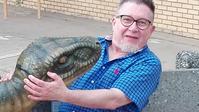About the Organizers
Gordon M. Burghardt

Gordon M. Burghardt is Alumni Distinguished Service Professor in the departments of Psychology and Ecology & Evolutionary Biology at the University of Tennessee. His research has focused on comparative studies of behavioral development in animals and has written numerous papers and chapters on play theory and evolution as well as The Genesis of Animal Play: Testing the Limits (MIT Press, 2005). He has published on play in dogs, bears, primates, lizards, turtles, fish, and octopus and on the role of play in communication, creativity, ritual, religion, and human culture.
Elisabetta Palagi

Elisabetta Palagi is Associate Professor at the University of Pisa. She has been studying primates spanning strepsirrhines and haplorrhines, including monkeys, apes and humans since 1992. She holds a Ph.D. in Evolutionary Biology and a publication record embracing sociobiology, comparative psychology, and anthropology. She has investigated the functions and evolutionary significance of play and behavioral patterns underlying emotional contagion and empathic abilities in human and nonhuman animals. Outside the primate order, she has focused on dogs, wolves, meerkats, seals and horses.
Sergio M. Pellis

Sergio M. Pellis received his Ph.D. in Animal Behavior/Ethology in 1980 from Monash University, Australia. He spent 1982–1990 at the University of Illinois, Tel Aviv University, and University of Florida where he received post-doctoral training in Behavioral Neuroscience and movement analysis. In 1990, he joined the University of Lethbridge, where he is Professor of Animal Behavior and Neuroscience. A central focus of Dr. Pellis' research is on the evolution, development, and neurobiology of play behavior.
Jeffrey Schank

Jeffrey Schank is Professor of psychology at the University of California, Davis. He received his Ph.D. in the conceptual foundations of science from the University of Chicago in 1991. His primary research tool is agent-based modeling, which he applies to the study of social behavior, its organization, development, and evolution.